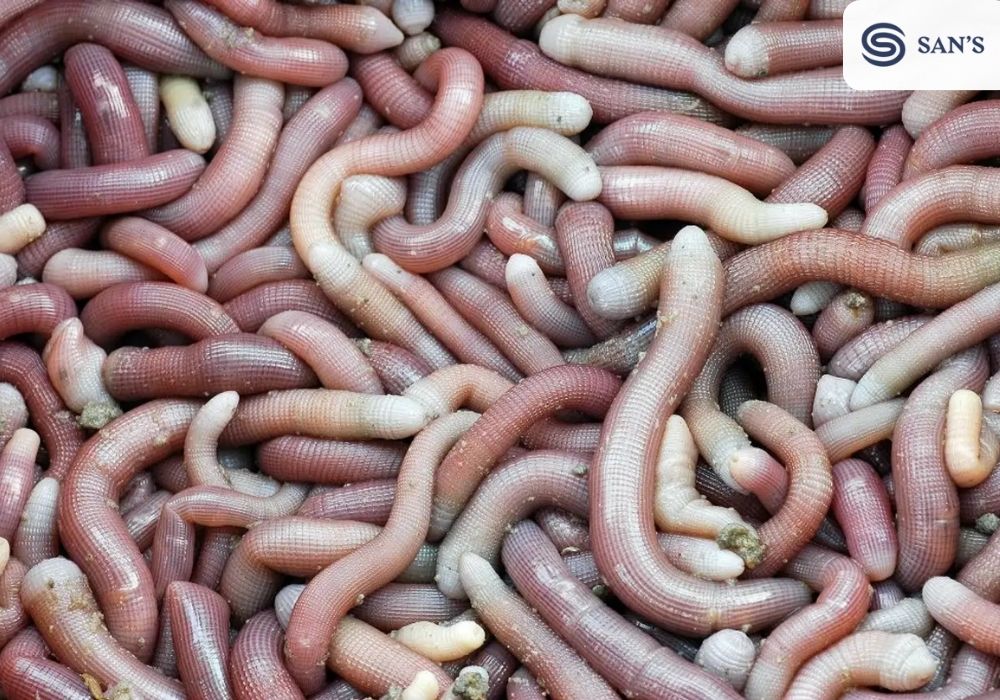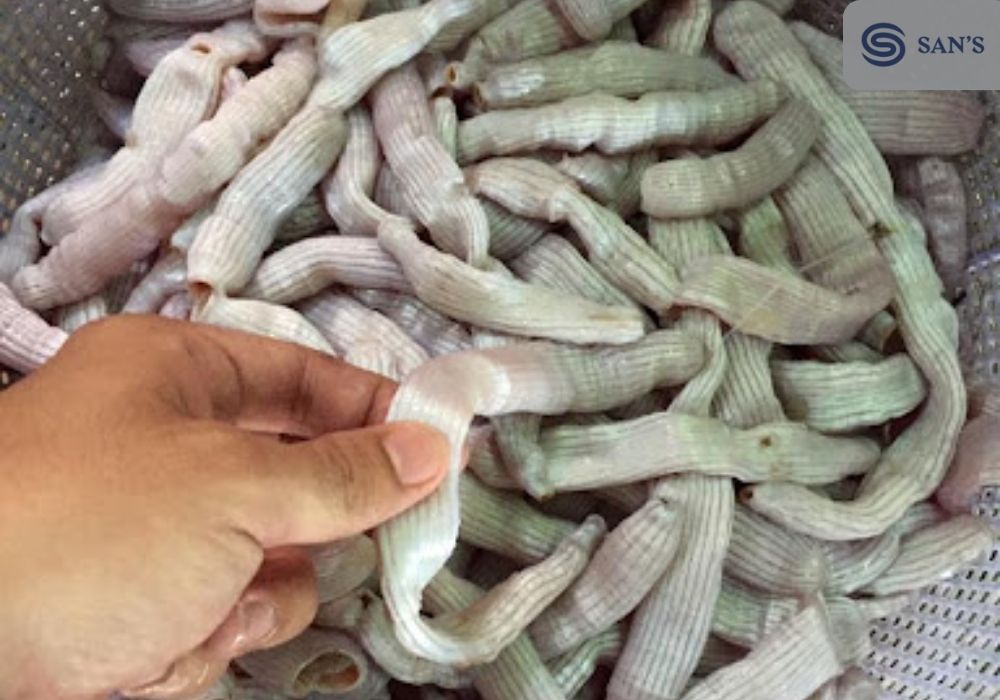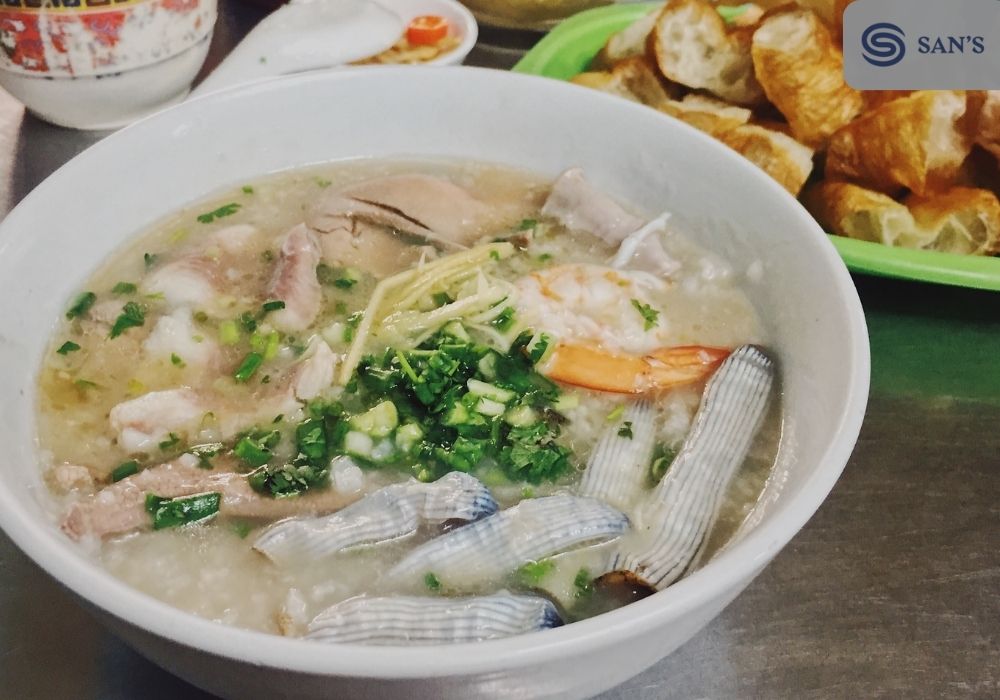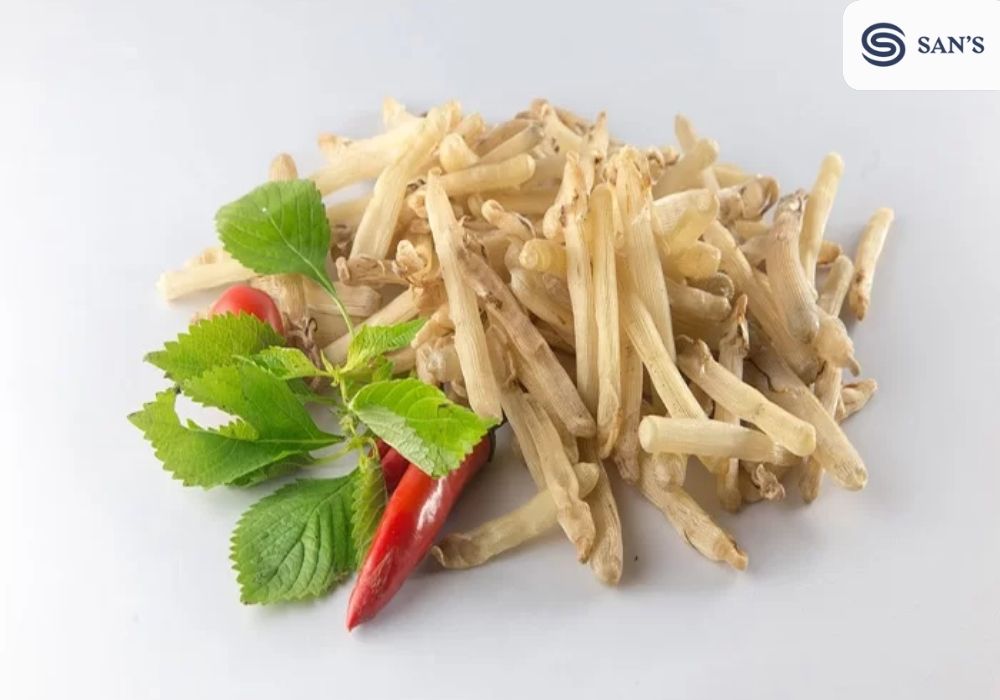Dive into the culinary depths of Ha Long’s unique marine delicacies, where the Sipunculus Nudus, commonly known as peanut worms, reigns as a gastronomic treasure. These intriguing sea creatures, a staple in the region’s diverse aquatic bounty, offer a taste experience that is as unusual as it is revered. A cherished specialty in Ha Long, the peanut worm is not just a testament to the area’s rich marine life, but also a symbol of the inventive and resourceful spirit of Vietnamese cuisine. In this exploration, we uncover the fascinating journey of Sipunculus Nudus from the depths of the sea to the heights of culinary acclaim, delving into its cultural significance, preparation methods, and the unique flavor profile that makes it a must-try for any adventurous food lover visiting Ha Long.
What is Sipunculus Nudus?

Sipunculus Nudus, colloquially known as the peanut worm due to its resemblance to a shelled peanut when contracted, is a fascinating marine species that captivates both biologists and gourmands. This unsegmented, soft-bodied worm, typically ranging from 10 to 30 centimeters in length, boasts a distinct cylindrical shape with a retractable anterior section.
The habitat of peanut worms is predominantly in the sandy and muddy bottoms of shallow marine waters, where they burrow and thrive. They are predominantly found in tropical and subtropical regions, flourishing in environments rich in organic matter which they feed on.
From a biological standpoint, Sipunculus Nudus plays a crucial role in the ecosystem. As detritivores, they contribute significantly to the breakdown of organic materials, aiding in nutrient cycling within the marine environment. This ecological role underscores their importance beyond culinary use.
In Ha Long Bay, these worms are not just prevalent; they are a celebrated part of the local marine life. The bay’s unique ecosystem, characterized by its limestone karsts and islets that create a perfect habitat for various marine species, including peanut worms, makes it an ideal location for their proliferation. Here, Sipunculus Nudus is not only appreciated for its ecological role but also as a delicacy that has become synonymous with the region’s rich culinary heritage.
Historical Background and Cultural Significance
Sipunculus Nudus, more commonly known as the peanut worm, has a rich history as a culinary delight in Ha Long Bay, rooted deeply in the fabric of the local culture. This marine delicacy, known for its distinctive, elongated shape resembling a peanut, has been part of the Vietnamese coastal diet for centuries. Its discovery and utilization as a food source are intertwined with the lives of the fishing communities who have long inhabited the shores of Ha Long Bay.
The cultural importance of peanut worms in Ha Long transcends mere sustenance. These creatures play a significant role in local traditions and festivals, often featured in celebratory meals and as offerings in various cultural ceremonies. Their presence on the dining table during special occasions is considered a sign of prosperity and good fortune.
In Vietnamese cuisine, particularly in Ha Long, Sipunculus Nudus is more than just an exotic ingredient; it represents a culinary heritage that is both unique and cherished. The preparation methods for peanut worms have been passed down through generations, reflecting the creativity and resourcefulness of the local chefs. The dish is celebrated not only for its unusual texture and flavor but also as a symbol of the harmonious relationship between the people of Ha Long and their bountiful, yet delicate, marine environment.
Culinary Journey of Peanut Worms (Sá Sùng)
The journey of Sipunculus Nudus, or peanut worms, from the ocean depths to the culinary heights of Ha Long’s cuisine, is a fascinating process steeped in tradition and innovation. The harvesting of these worms is a skill in itself, often conducted by local fishermen who have honed their techniques over generations. They meticulously sift through sandy shores and mudflats at low tide, unearthing these delicacies without harming the delicate ecosystem.

Once harvested, the preparation of peanut worms is a careful and respectful process. The worms are thoroughly cleaned and often boiled briefly to tenderize them while retaining their unique texture and flavor. In traditional Ha Long cuisine, they are commonly dried in the sun, a method that intensifies their umami flavor and allows them to be stored for extended periods.
In traditional recipes, these dried Sipunculus Nudus are rehydrated and added to various dishes. They are a key ingredient in the famous Pho in Ha Long, imparting a deep, sea-salty flavor to the broth. Locals also sauté them with garlic and herbs, serve them in salads, or simply grill them for a smoky, savory snack.
Modern chefs, captivated by the unique flavor profile of peanut worms, have begun to experiment, creating fusion dishes that combine traditional Vietnamese flavors with international culinary techniques. From incorporation into sophisticated seafood pasta dishes to being featured in gourmet appetizers, the peanut worm is finding its way into the world of modern haute cuisine, introducing food enthusiasts to the rich flavors of Ha Long’s marine life.
This culinary journey of Sipunculus Nudus reflects not only the rich gastronomic heritage of Ha Long Bay but also the evolving palate of contemporary cuisine, where tradition meets innovation in the most delicious ways.
Nutritional Value and Health Benefits
Sipunculus Nudus, commonly known as peanut worms, are not only a unique culinary ingredient but also a rich source of nutrition. These marine worms boast a high protein content, making them an excellent source of essential amino acids necessary for muscle building and repair. In addition to protein, they are low in fat and contain a variety of vitamins and minerals, including Vitamin B12, iron, and zinc, which are vital for maintaining good health.

The health benefits of consuming peanut worms are notable. The high protein and low-fat content make them a healthy choice for those looking to maintain or lose weight while ensuring adequate protein intake. The presence of iron aids in preventing anemia and improving overall energy levels, while zinc is crucial for a healthy immune system. Vitamin B12, found abundantly in peanut worms, is essential for nerve function and the production of DNA and red blood cells.
However, like with any seafood, there are dietary considerations to be aware of. People with shellfish or seafood allergies should exercise caution as peanut worms could potentially trigger allergic reactions. It is also important to source them from reputable suppliers to ensure they are free from contaminants and prepared in hygienic conditions.
Overall, the inclusion of Sipunculus Nudus in the diet offers a blend of unique flavors and a host of health benefits, making it a prized component of Ha Long’s culinary offerings and a nutritious option for seafood enthusiasts.
>>> Read more: Halong Bay Food: 11 Must-Try Local Delicacies
Dining Experience: Savoring Sipunculus Nudus in Ha Long
Dining on Sipunculus Nudus, or peanut worms, in Ha Long is an experience that blends traditional Vietnamese culinary art with an adventurous taste exploration. When trying this dish, expect a variety of preparations, from simple, rustic servings to more sophisticated, gourmet presentations. The peanut worms’ unique, slightly chewy texture and savory, umami-rich flavor make them a memorable part of Ha Long’s culinary landscape.
Etiquette and Tips for Enjoying Peanut Worms
- Be open-minded: For many, eating peanut worms is a novel experience. Approach the dish with an adventurous spirit.
- Use chopsticks: As with most Vietnamese cuisine, chopsticks are the utensils of choice.
- Start with small portions to appreciate the distinct flavor before diving into larger servings.
- Eating peanut worms is typically a communal experience, so be prepared to share dishes with others at the table.
Pairing Suggestions
- Local Beverages: Peanut worms pair well with local Vietnamese drinks. A cold Bia Hoi (Vietnamese draft beer) can complement the dish’s rich flavors. For a non-alcoholic option, try a refreshing iced tea or a local fruit juice to cleanse the palate.
- Side Dishes: To balance the umami of peanut worms, side dishes often include fresh, zesty elements. Green papaya salad, pickled vegetables, or steamed rice are excellent choices. They not only add a textural contrast but also help to mellow out the strong flavors of the worms.
Eating Sipunculus Nudus in Ha Long is as much about the experience as it is about the food. It’s an opportunity to immerse oneself in the local food culture and to appreciate a dish that has been a staple in the region for generations. Whether enjoyed at a bustling street food stall or a high-end restaurant, savoring peanut worms is a must-try for any culinary adventurer visiting Ha Long.
Tourist Guide: Where to Find and How to Enjoy
Ha Long Bay, with its stunning seascapes and rich culinary traditions, offers a variety of venues where tourists can savor the unique taste of Sipunculus Nudus, or peanut worms.
Recommended Places to Try Sipunculus Nudus
- Local Street Markets: A visit to Ha Long’s bustling street markets, like Ha Long Market or Bai Chay Market, offers an authentic experience. Here, you can find peanut worms prepared in traditional styles.
- Seafood Restaurants: Numerous restaurants along the bay, especially in the areas of Tuan Chau Island and Hon Gai, serve sophisticated peanut worm dishes.

- Floating Restaurants: For a unique dining experience, try the floating restaurants in the bay. These establishments provide freshly prepared seafood dishes with scenic views.
Tips for Tourists
- Best Times to Visit: The best time to enjoy peanut worms in Ha Long is from late spring to early autumn when they are most abundant.
- How to Order: If you’re new to peanut worms, ask for the restaurant’s recommended preparation or opt for a sampler platter.
- Expected Costs: Prices can vary depending on the restaurant’s location and the dish’s preparation. Generally, peanut worms are considered a delicacy, so they might be priced higher than other seafood options.
Experiencing the Dish as Part of Ha Long’s Culinary Tours
- Culinary Tours: Many tour operators in Ha Long offer culinary tours that include peanut worm tasting sessions, along with visits to local markets and cooking classes.
- Cooking Classes: Some tours also offer cooking classes where you can learn how to prepare Sipunculus Nudus from local chefs, providing a deeper understanding and appreciation of this unique dish.
Experiencing Sipunculus Nudus is a key part of the gastronomic adventure in Ha Long Bay. It’s an opportunity not just to taste a local specialty but also to engage with the rich culinary heritage of this beautiful region. Whether you’re sampling peanut worms at a street market or enjoying a sophisticated dish in a restaurant, this experience is sure to be a highlight of your visit to Ha Long.
Conclusion
Sipunculus Nudus, or peanut worms, stand as a distinctive emblem of Ha Long Bay’s rich and diverse culinary landscape. This unique delicacy, with its intriguing texture and profound umami flavor, offers a culinary experience that is as memorable as it is flavorsome. From the bustling street markets to the serene floating restaurants, the journey of savoring this local specialty is intertwined with the cultural and natural tapestry of Ha Long Bay.
For those planning a journey with San Travel, the adventure to Ha Long Bay promises an array of incentives, with the tasting of Sipunculus Nudus being a highlight. We encourage travelers to immerse themselves in the unique flavors of Ha Long, where each dish tells a story of the sea and the people who have thrived alongside it. Trying peanut worms is more than just a meal; it’s an integral part of experiencing the true essence of Ha Long Bay’s culinary culture.
>>> Read more: Horseshoe Crab Delicacy: A Culinary Journey in Halong Bay
FAQs
- What is Sipunculus Nudus and how does it taste?
- Sipunculus Nudus, commonly known as peanut worm, is a marine worm found in Ha Long Bay. It has a unique, slightly chewy texture and a savory, umami-rich flavor, often compared to clams or oysters.
- Is Sipunculus Nudus safe to eat?
- Yes, it’s safe when properly cleaned and cooked. As with all seafood, ensure it’s fresh and sourced from reputable suppliers.
-
How do I cook Sipunculus Nudus?
- Peanut worms can be steamed, boiled, grilled, or even sun-dried. In Vietnamese cuisine, they’re often added to soups and stir-fries. Clean them thoroughly before cooking, and consider simple seasonings to enhance their natural flavor.



Comment (0)